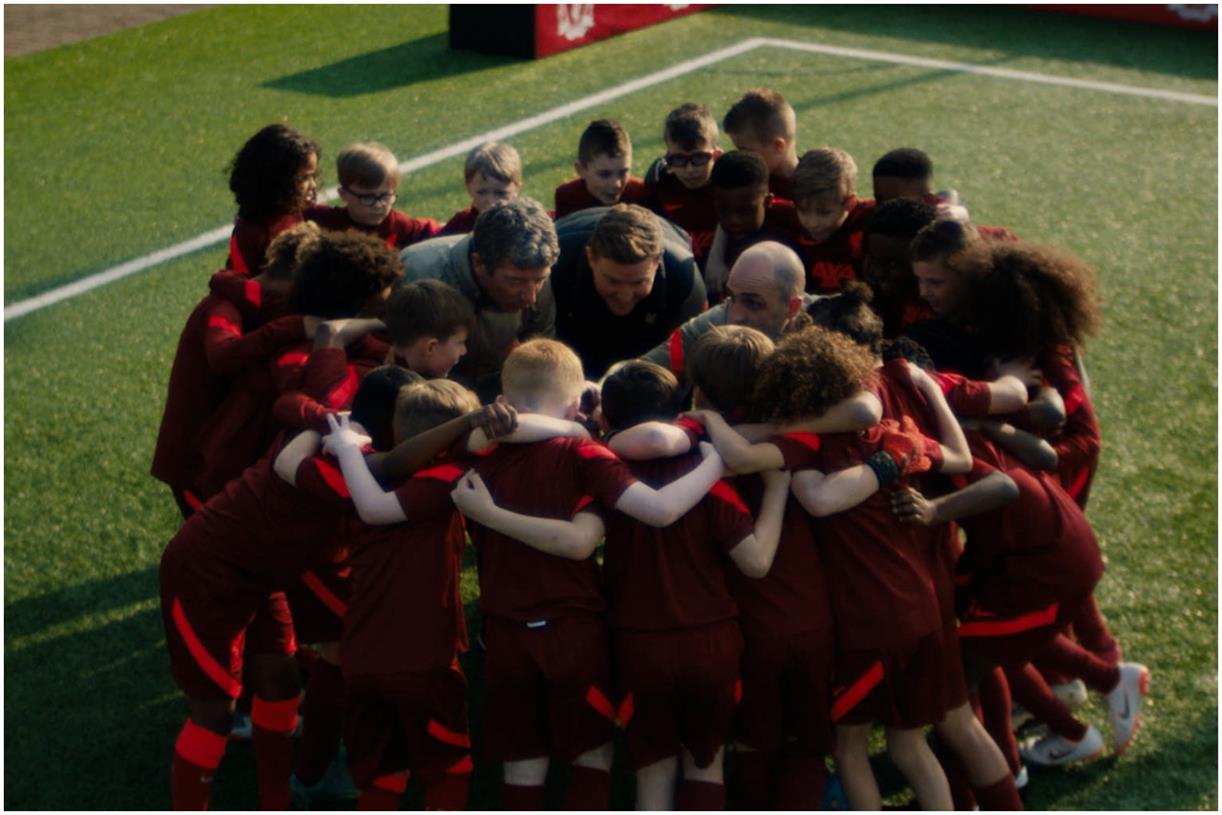Building a Winning Customer Referral Program
Word of mouth is still one of the best kinds of marketing you can have. Find out how a great customer referral program can benefit your business.

The customer referral program is among the most effective marketing strategies to gain or appeal to new customers.
But just how effective are customer referral programs, how do they actually work and how do you go about implementing your very own for your business?
Here are your answers:
What Is a Customer Referral Program?
Most often, these types of programs provide incentive for existing customers to refer their friends and family to the brand with the hope that they complete a purchase. The catalyst for these programs is usually coupon codes, cash rewards, discounts, gift cards or something similar, and it’s offered to the referrer as a thank you for essentially recruiting a new customer.
While incentivized referrals are the most popular type, they are not the most organic. Of course, referrals can (and do) occur naturally when you offer great products and/or services and have lots of happy customers.
Here are the three main types of referrals:
Direct referral: This is the most organic type of referral. It happens when an existing customer refers someone to your brand who is looking for a product or service like the one you sell. There’s no referral incentive attached to this, and it’s most often the result of a happy customer nonchalantly mentioning your product to someone else.Reputation referral: The hardest type of referral to achieve is the reputation referral. This is generally reserved for brands that have made a huge impact and garnered a very positive reputation with their target audience. These types of referrals happen when someone is so confident in your product or service that they recommend it to others with conviction.Incentivized referral: Somewhere in between the other two types, incentivized referrals are exactly that — referrals that happen because you’ve provided incentive for your customer to do so.Qualified referral: This is the term given to a referral that actually converts, whether they completed a purchase, signed a contract or opened an account.Why Do You Need a Customer Referral Program?
When your sales funnel needs some grease to encourage more people through it, a referral program is one of the most effective strategies for customer retention and acquisition.
In fact, referral programs, besides just being a great way to boost sales, also come with a high level of trust from customers. A successful referral program will make a brand advocate out of a customer, who will be more likely to recommend your products, thus shining a trustworthy light on your brand.
Word-of-mouth marketing (WOMM) in general has unmatched staying power. It was the original form of marketing before adverts and technology became the mainstream, and it’s still one of the most powerful tools.
By implementing a customer referral program, you’re getting in on the WOMM game, which could exponentially increase your reputation as a brand.
In short, you need a customer referral marketing program because:
It helps convert customers.It builds customer loyalty.It boosts customer satisfaction.It encourages WOMM.It increases your reputation.And it’s the most trustworthy form of marketing that exists, from a consumer perspective.How Customer Referral Programs Work
It all starts by inviting your loyal customers to essentially become brand ambassadors. These days, this is commonly done (at least in the retail and eCommerce spaces) by providing a shareable referral link to customers who can then send it off to anyone whom they think would enjoy what you have to offer. When a purchase is made via the link, the referrer earns a referral reward — it’s that simple.
Using the referral link method makes everything easily traceable to ensure that the right ambassadors are getting the right rewards for introducing your brand to new customers.
This isn’t the only method, though. For example, we recently launched a brand new client referral program at Brafton that’s charity-focused. Our goal is to donate an additional USD $5,000 to charity on behalf of our customers. It works like this:
Our clients refer Brafton to someone who might be interested in our services, and if they meet with our sales team, we’ll donate $200 to a charity of the referrer’s choice. Better yet, if the referral leads to a partnership, we’ll tack on an additional $300, for a total donation of $500.
And there are only 3 rules, which are:
Referrals can’t be someone we’re already in contact with about a partnership. They have to be genuine prospects with a real interest in what we offer. Charity selections need to be listed on Give.org.Referral Program vs. Affiliate Program
While they may appear similar on paper, a referral program and affiliate program are two different things. Let’s quickly clear the air of any confusion.
A referral program, or referral marketing, is what we’ve been talking about. It’s an initiative wherein your existing and loyal customers are rewarded for recommending your product or service to a new potential customer.
An affiliate program, or affiliate marketing, is an initiative that recruits ambassadors — usually people with a large audience, such as influencers — to advocate for your brand for a set fee. They don’t necessarily have to be customers at the beginning of the initiative.
Now that we know this difference, let’s move on to creating your own referral program!
Creating Your Own Referral Program
Before you get started with building your own referral program, there are a few good-to-knows and prerequisites that will help you make the most of your initiative.
1. Have a Great Product or Service
This goes without saying. Products and services that are crummy or don’t live up to your messaging will leave a bad taste in your customers’ mouths. Make a great product or offer exceptional service and customer referrals will come naturally!
2. Know Your Target Audience
People within your target audience are more likely to have an interest in your products or services, and therefore, are more likely to complete a purchase with you. Make sure that you know who your core demographic is, and develop your messaging in a way that communicates this with your current customers. When it comes time for them to participate in the referral program, the individuals they introduce are going to be more likely to convert.
3. Set Achievable Goals
Like everything in business, goals are absolutely essential. When you set achievable goals, you can better track your progress, make timely and necessary decisions and have a better overall chance at succeeding. It’s no different when it comes to developing an effective referral program.
4. Build a Strong Marketing Campaign for the Program
The success of your referral campaign and program relies on brand awareness. After all, if people don’t know about it, they can’t take part in it. If marketing is outside of your wheelhouse while you focus your attention on developing the program, consider hiring an agency that can take care of everything. That way, you can remain focused on developing a winning campaign that makes sense for your business.
5. Make It Easy for Customers To Use
Convoluted registration processes or unclear instructions surrounding your referral program can seriously hamper your effort. Make sure that instructions and rules are easily understandable, and that it is as painless as possible for customers to receive their referral reward for their successful referrals.
3 Examples of Effective Referral Programs
Most every notable brand has some type of referral program in place. Here are a few standout examples:
1. Uber
It’s quite possible that Uber has the most recognizable referral program example. Right from the get go, Uber users are provided with a referral code when they sign up for an account. Using that code, they can refer other people to sign up for a rider or driver account and get rewarded. Providing users with a code without them having to register to become a part of the program is efficient, effective and a large part of Uber’s success.

2. PayPal
Perhaps a more classic example of a successful referral campaign is PayPal. Their model is simple: Encourage your friends who aren’t using PayPal to sign up, link their bank or credit card and spend $5, and boom, you and your referred friend are rewarded $5. Participants could take advantage of this offer up to 10 times, meaning that there is potential to earn $50 by referring just 10 of your friends and family to the platform.

3. Dropbox
Dropbox is often cited as the first major success in referral marketing. Their unique referral program idea offered both advocates and referred customers an upgrade to their cloud storage capacity on the platform, for free, instead of cash rewards. An advocate or referred customer could earn up to 16GB of additional storage. That’s pretty unique, and super useful for people who use the application daily or in a professional capacity.

Getting Started With Your Own Program
A winning referral program starts with a great product, a solid plan and expert marketing. Start by creating a solid referral program framework, whether it’s an original idea or one based on popular structures. Once you’ve developed a strategy, it’s time to implement and advertise.
There’s lots of things that take place between the ideation and planning stages and when your customer referral program goes live. It can be a lot of work, but when done correctly, all your effort is sure to be worth it. So, go on — incentive and encourage those customer referrals!

 Konoly
Konoly 



















.jpg&h=630&w=1200&q=100&v=6e07dc5773&c=1)











